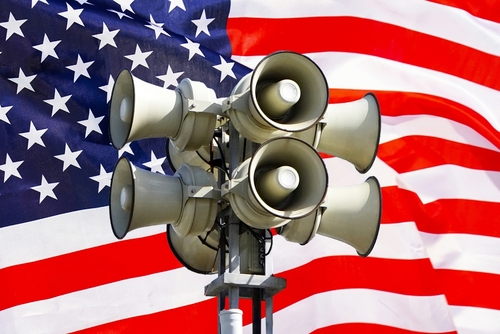
The U.S. Department of Homeland Security released a report this week entitled Electromagnetic Pulse Shielding Mitigations, which laid out a series of recommendations to best protect the National Public Warning System from the threat of an electromagnetic pulse (EMP).
EMPs can be man-made for intentional attacks or erupt as the result of certain natural occurrences – solar storms, for example. Regardless of their source, they can be disruptive and destructive to modern systems, potentially disabling the electrical grid, communications, transportation systems, and more.
“This could impact millions of people over large parts of the country,” Kathryn Coulter Mitchell, DHS senior official performing the duties of the Under Secretary for Science and Technology, said. “It is critical to protect against the potential damage an EMP event could cause.”
Among suggestions offered in the report were to assess system vulnerabilities and determine which of three approaches to protect against EMPs would work best: protected equipment enclosures, protected shelters, or protected rooms/buildings. As part of this, the agency also encouraged assessors to identify any external sources their systems rely upon, shield points of entry, and pursue activation and operational procedures, along with regular inspections, maintenance, and more. The EMP threat is present and continuing, in the authors’ words, and should not be skimped on during risk assessments.
Accordingly, DHS worked through its Science and Technology Directorate (S&T) and with both the Federal Emergency Management Agency (FEMA) and the Cybersecurity & Infrastructure Security Agency (CISA) on its latest recommendations. The results could apply to government agencies at all levels, as well as critical infrastructure owners in the private sector, as both have a part to play in the National Public Warning System – a structure that allows the president of the United States to communicate directly with American citizens during national emergencies.
FEMA utilizes 77 private sector radio broadcast stations with EMP-protected backup transmitters, communications equipment, and power generators to allow those stations to keep broadcasting national emergency information during EMPs. These stations dot the country, guaranteeing radio broadcast coverage to more than 90 percent of the U.S. population.
“These stations represent a key public-private sector partnership and serve as the primary sources for a national emergency broadcast during a catastrophic disaster,” Antwane Johnson, FEMA program director for the Integrated Public Alert and Warning System, said.
As part of a broader DHS effort to ensure critical infrastructure and emergency response systems are protected against EMPs, FEMA conducted high-altitude electromagnetic pulse (HEMP) testing on the NPWS equipment to evaluate its operational resiliency. The testing confirmed the effectiveness of protection for NPWS stations, showing they could withstand the effects of an EMP in accordance with military specifications.




